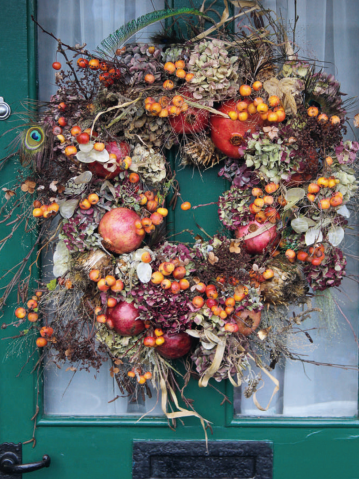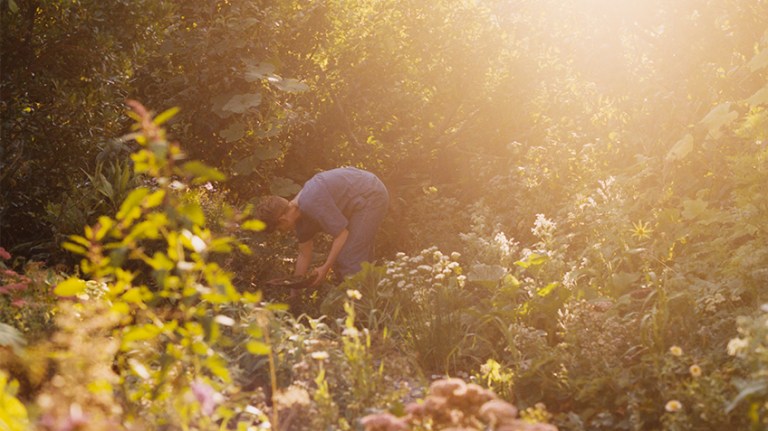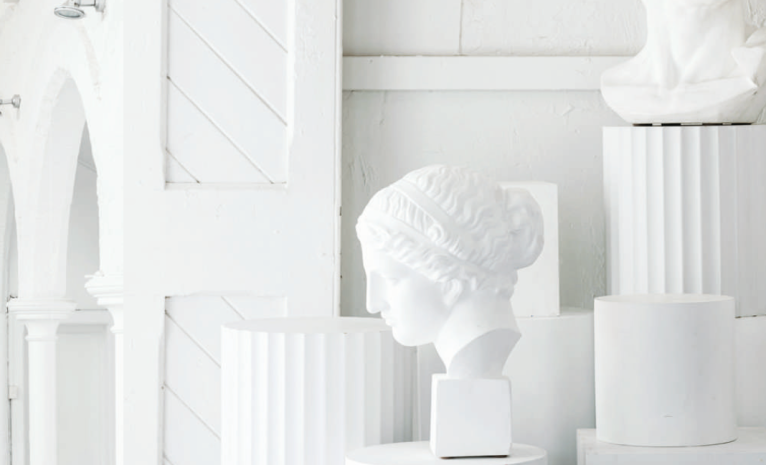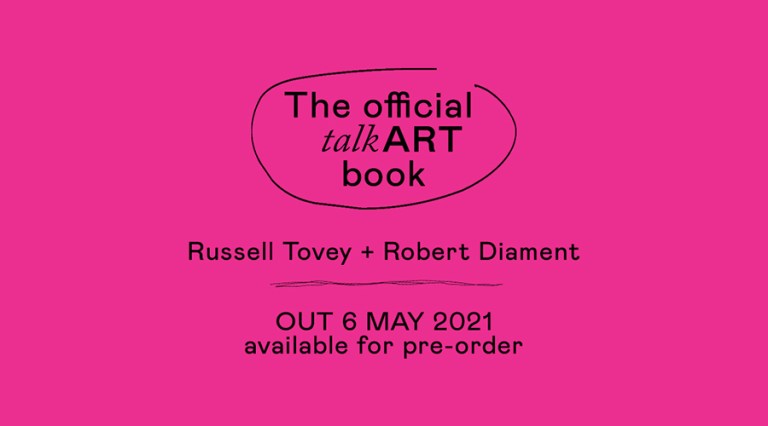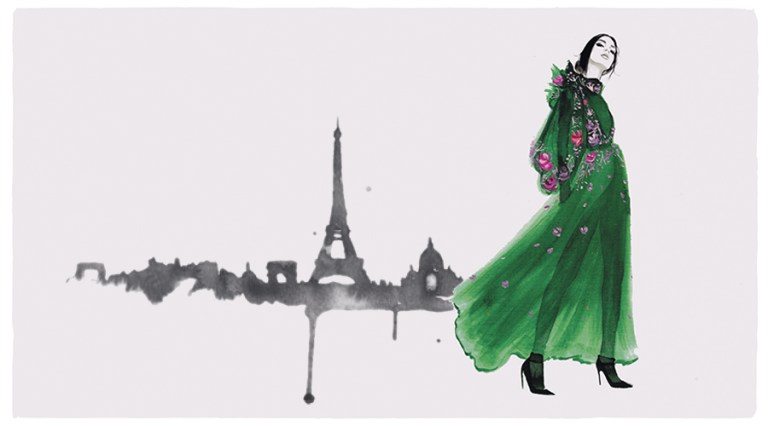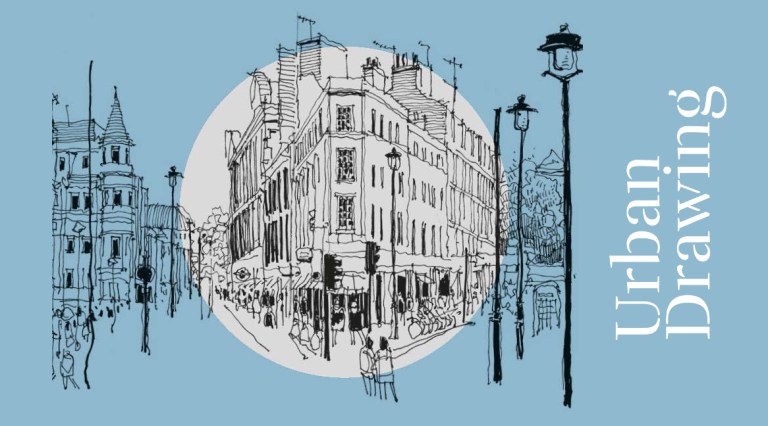Watercolour basics by Harriet de Winton
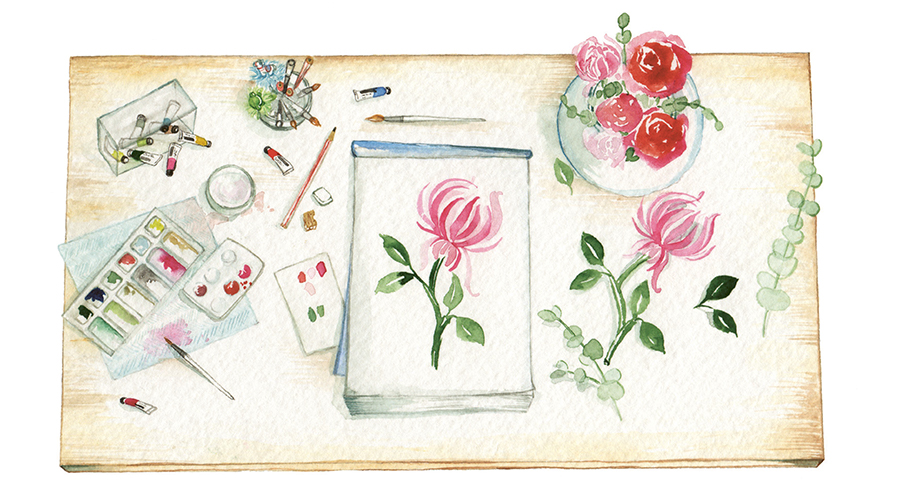
PAINTING TECHNIQUES
First we need to see what watercolour can do. Watercolour pigment is intensely concentrated so you need only the tiniest bit. Water is the vehicle for the colour to travel, and it does most of the work. The golden rule of watercolour is: your brush should always be wet. I don’t mean waterlogged at all times, but the bristles need to be damp enough to hold paint, even when working on precise detail. Swish the brush around in your water jar and wipe the bristles on the rim a few times. This allows paint to flow from brush to page as smoothly as a felt-tip pen. Throughout this book I will refer to the paint as ‘wet’, ‘diluted’ or ‘concentrated’.
Wet: Plenty of water on the brush with plenty of colour, allowing for broad coverage and bright, seamless blending.
Diluted: Plenty of water and very little colour to achieve a pale, translucent quality.
Concentrated: Used most often for precise detail in the final stages of a painting. A good coverage of colour on the brush with minimal water. The following painting techniques are all carried out with a size 2 pointed-round brush.
Dry on Dry
Applying concentrated paint to a dry surface, either a dry page or a painted page that has dried fully. Your brush should never be bone dry, the term ‘dry on dry’ refers to watercolour in its most concentrated form. Paint a concentrated circle on a dry page, similar to the one shown here – not very exciting, but the colour is opaque and going nowhere on a dry page.
Wet on Dry
Applying wet paint to a dry surface, either a dry page or a painted page that has dried fully.
Clean your brush off and load it up with water. Now fill in that ‘dry on dry’ circle with water, stroking the brush to pick up colour from the inner edge of the circle, and watch the colour blend inwards. An initial sweep round will bring in a paler blue to fill the circle. A few more strokes will intensify the colour to make a solid colour circle. The outer edge of the circle remains crisp on the dry paper.
Wet on Wet
Applying wet paint to a wet surface when you want to create a soft, diffused edge and a seamless blend.
With a clean brush, wet a section of page, approximately 5cm square. Working quickly – so that the water doesn’t seep into the paper and dry – paint that same blue circle with your wet brush and watch the paint feather out. The more soaked your page, the more unruly your watercolour will be in its travels. It is tempting to prod and poke the watercolour tendrils, but it is always more effective when you let the paint do its thing undisturbed.
Blending and Layering
When working on a composition, the adding of colour will either be in the form of blending (wet on wet) or layering (wet on dry, dry on dry). Blending: Blending colours involves a little restraint – it is so tempting to help the colours along, prodding them with your brush. This can lead to over-mixing, which nearly always results in a dull, flat colour – or at worst, a brown sludge. Read the Choosing Colours section (page 14) for more on choosing a fail-safe colour palette.
Paint a wet circle, then choose a different wet colour and paint a second, just overlapping it. As long as you are using enough water in your colour mix, the paint will do its thing unaided.
Layering: Once a layer of paint is bone dry, you can add additional layers of colour and detail with no fear of it bleeding. It is far easier to add a darker/more concentrated colour to a lighter/more diluted one than the other way around. In the projects, I will always start with a light wash and build it up in intensity layer by layer. When it comes to the compositions in the last chapter, you will need to keep this in mind when you choose what to paint first.
CHOOSING COLOURS
Each artist’s palette has a different number of colours depending on how they like to mix each hue. I work from a fairly limited palette as I enjoy mixing colour and discovering new tones. As a subject matter, nature boasts an astonishing range of colours and it requires a bit of experimentation to build the perfect colour palette.
COLOUR VALUE SCALE
‘Value’ is defined as the relative lightness or darkness of a colour. To experiment with different colours and see how they behave, paint a filled-in wet circle of colour. Clean your brush off and paint a filled-in circle of just water that kisses the edge of that first circle – watch the paint burst into the wet space. Load up your brush with more water and paint another overlapping circle until you have what looks like a caterpillar walking off into the mist. The number of circles you achieve all depends on the amount of pigment in the first circle, the amount of water being used and the speed at which you work.
White watercolour pigment is often found in a pan of colours. It is a semi-opaque white, which can be used to create pastel tones. However, I don’t use it, as I prefer to use water to dilute the pigment to produce lighter tones. The projects throughout this book rely solely on the use of water to create a spectrum of value.
When it comes to dark colours, I have cultivated a range of alternatives to using pure black. Throughout this book we will mix the dark, shadowy colours from brown, blue and red shades, which form far superior tones to that of black from a tube.
BUYING PAINTS
We use 14 colours in this book. They can be categorised as warm or cool. There are also earth colours – ancient earth pigments that help create a broader mix of colours for the palette.
Warm
- Sap green
- Green gold
- French ultramarine
- Cadmium red
- Cadmium orange
- Cadmium yellow
Cool
- Hooker’s green
- Prussian blue
- Permanent rose
- Cobalt violet
- Lemon yellow
- Cobalt green deep
Earth
- Ochre
- Burnt sienna
I would recommend buying a set of paints that includes as many of these colours as possible, but each project has its own set of colour swatches, so you can mix your colours to match if you don’t have every colour in the above list.
This is an extract from Harriet de Winton’s New Botanical Painting

